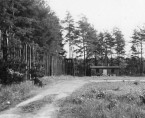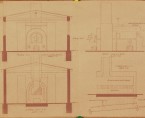- Museum
-
History
- Home Page - History
- Before the extermination
- Auschwitz I
- Auschwitz II-Birkenau
- Auschwitz III-Monowitz
-
Auschwitz sub-camps
- Altdorf
- Althammer
- Babitz
- Birkenau
- Bismarckhütte
- Blechhammer
- Bobrek
- Brünn
- Budy
- Charlottegrube
- Chelmek
- Eintrachthütte
- Freudenthal
- Fürstengrube
- Gleiwitz I
- Gleiwitz II
- Gleiwitz III
- Gleiwitz IV
- Golleschau
- Günthergrube
- Harmense
- Hindenburg
- Hubertshütte
- Janinagrube
- Jawischowitz
- Kobier
- Lagischa
- Laurahütte
- Lichtewerden
- Mesersitz
- Monowitz
- Neu-Dachs
- Neustadt
- Plawy
- Radostowitz
- Raisko
- Sonderkommando Kattowitz
- Sosnowitz (I)
- Sosnowitz (II)
- Sośnica
- SS Bauzug
- SS Hütte Porombka
- Trzebinia
- Tschechowitz (I)
- Tschechowitz (II)
- Auschwitz and Shoah
- Categories of prisoners
- Prisoner classification
- Fate of children
- Life in the camp
- Punishments and executions
- Camp hospitals
- Medical experiments
- Resistance
- Informing the world
- Evacuation
- Liberation
- The number of victims
- The SS garrison
- Holocaust denial
- Auschwitz Calendar
- Photo gallery
- Visiting
-
Education
- Home Page - Education
- Study visits
- Educational projects
- Conferences
- Thematic sessions
- Studies
-
Exhibitions
- Auschwitz, Memory, World
- Forbidden Art
- German Plans for Auschwitz Redevelopment
- June 14, 1940
- Leben? Oder Theatre? Charlotte Salomon 1917-1943
- Nazi German Death Camp Konzentrationslager Auschwitz
- People of Good Will
- Residents of Insurrectionary Warsaw
- So I am here kneeling down upon this Golgotha of modern times...
- The Liberation of KL Auschwitz
- The Memory of Auschwitz
- Traces of them remain
- Women at KL Auschwitz
- Visiting the Memorial
- E-learning
- Library - Online Catalogue
- Volunteer Bureau
- Resources for teachers
- ICEAH – General Information
- “Light of Remembrance”
- Contact
Blechhammer
The largest of the Auschwitz sub-camps, located in Sławięcice near Blachownia Śląska (German: Blechhammer), near the synthetic fuels plant belonging to Oberschlesische Hydrierwerke AG. It came into being in April 1944 when the Auschwitz commandant’s office took over a Schmelt Organization compulsory labor camp for Jews. The camp consisted of 25 wooden barracks—residential, storage, kitchens, washrooms, etc., surrounded by a wall of concrete panels topped with electrified barbed wire. It also had a small crematorium. Prisoners worked at expanding the plant by digging foundations and building roads and air-raid shelters. Since the American bombing of the plant started in June 1944, prisoner Kommandos were sent there as needed to locate and disarm unexploded bombs. A total of almost 200 prisoners died in the camp, and several hundred more were probably sent to Birkenau after selection. The peak population, in January 1945, was almost 4,000 men and 160 women. During the evacuation on foot to the Gross-Rosen camp, the SS shot about 800 of these prisoners. Shortly before the liberation of Blechhammer by Soviet soldiers, the SS torched, shelled, and tossed grenades into the camp barracks, in which sick prisoners had been left behind. Some of them survived.

